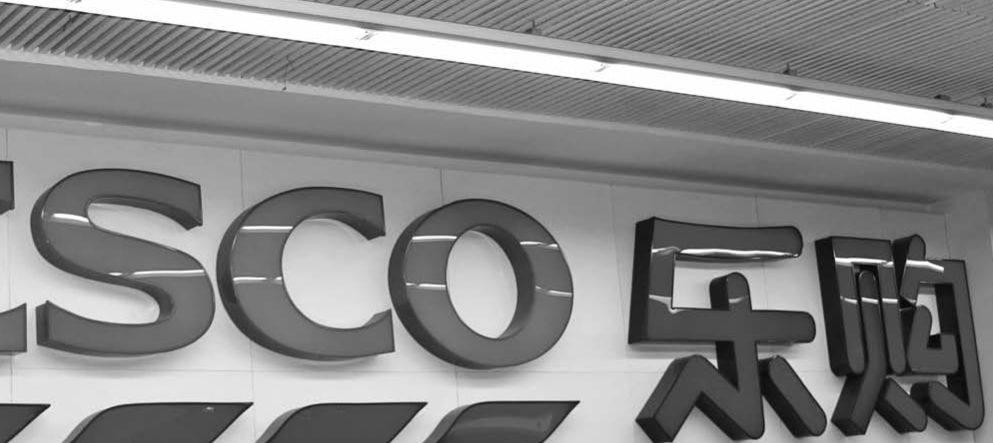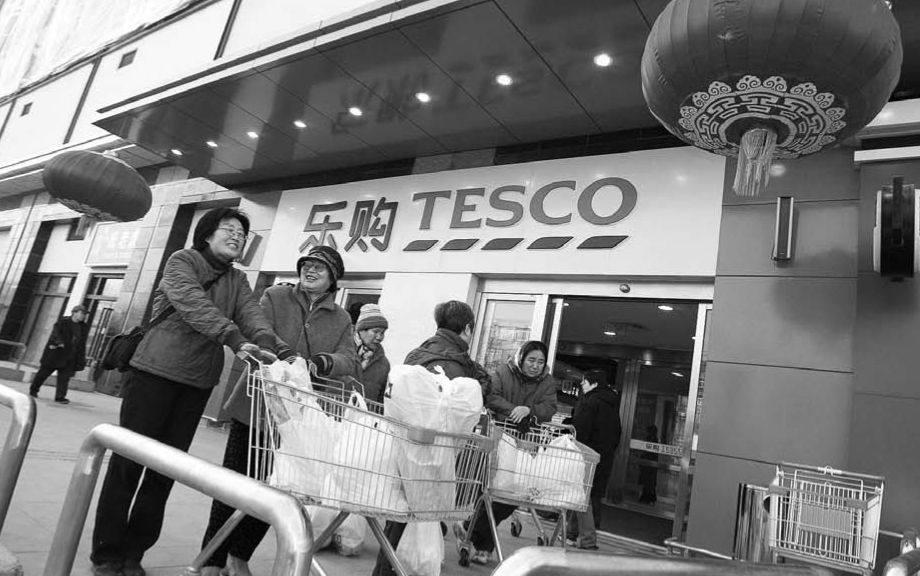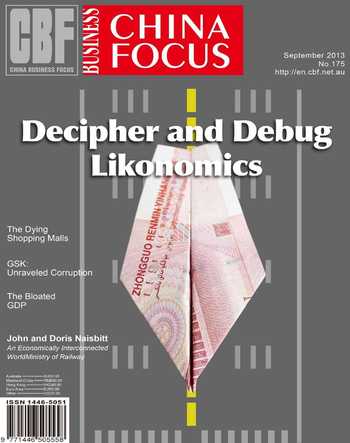Limping Tesco in China
Tesco, the third largest retailer in the world, is not doing very well in China. A supplier of Tesco in Qingdao, Shandong, told that a supermarket of Tesco was closed in June. This outlet, opened to consumers in 2010, was the first energy-saving outlet of Tesco. Its advanced smart energy management system and automatic carbon detection system are two of the greatest features of this outlet.
In addition, Tesco stationed its self-owned commercial real estate brand LifeSpace into this outlet. The combined role of a supermarket and shopping mall made this Tesco outlet the largest comprehensive property of Tesco in Qingdao.
However, this grand outlet, which the Tescos headquarters has laid great expectations on operation, has come to its end only after three years.
Hindered by Local Rivals
By the end of May, most of the dealers in the aforementioned Tescos outlet had been moved out. The first floor of the shopping center was all clear except a McDonalds restaurant. The second floor was slightly better, as one or two dealers still stayed there, hanging the banner of “greatest discounts” and hoping to make a kill before the final day came.
The access to the fourth and fifth floors was even blocked. The Tesco supermarket, which covers over 20 thousand square meters, was still selling products to the few consumers.
Standing across the road opposite this Tescos outlet is a huge complex owned by Shandong-based Liqun Group. This complex is also a retail body consisting of a department store and a supermarket. It came to this place even earlier than Tesco, and in the past three years, the two outlets, which share almost the same operating pattern and product categories, were always battling against each other.
The result of the competition is easy to see at this moment. Tesco is almost brought down, while Liquns outlet, was full of local consumers.
A group of figures could visualize the comparison more easily. The annual sales volume of Tescos supermarket was less than 200 million yuan while Liquns supermarket could earn over 300 million yuan annually.
After Tescos establishment in this area, the two firstly initiated a price battle, which lasted half a year. Liqun, the early-comer, did not want its customers attracted by Tesco, so it fought back, furiously. The competition was so intense that it was very rare in the Chinese retail market.
An insider from Liqun said that Tesco kept its profile as a low-price product supplier because of its continuous devotion to discount. However, the quality of its discounted products was lowered after a while.
“The real meaning of marketing is to make consumers feel what they buy outnumbers what they spend. In that way more customers will come to boost the sales of other products. If the lowered price is disgraced by lowered product quality, the promotional campaigns no longer hold the attraction for consumers, who will come to the supermarket less and less frequently.”
The continuous price war gradually brought Tesco down to its knees. On the other hand, the lowered quality cannot bring a large group of consumers into Tesco without the assistance of high quality. Before long, fewer consumers came to the Tesco store and the leaders of this outlet were frequently changed.“During our three years cooperation with Tesco, they at least changed the director of daily supply department six to seven times,” said Zhao Yi, President of Qingdao Chamber of Commerce for Suppliers.
The Reason to the Failure
Apart from the quality problem, there are other reasons made the Tesco outlet in Qingdao lose to its neighbor, despite its bigger size and larger capital support.
The first reason concerns the brand recognition and consumer acceptance. This is one of the primary advantages of Liqun. The outlet was opened in August 2008 and had already left a mark in consumers minds before Tesco arrived.
“Frankly speaking, what were sold in Tesco and Liqun were almost the same and the prices break even with each other. But we have been shopping in Liqun for years, and been used to it,” said a taxi driver in Qingdao.
The second reason comes from the support from headquarters to the outlet. Although Tesco is a global supplier, the supply from the headquarters to Qingdao, a second-tier city in China, is still too long. The support is not so strong as what Liqun, headquartered in Qingdao, gave to its outlet. In addition, Liqun has a big market share in Qingdao. Its logistics center plays an important role in the delivery and distribution for the sake of massive purchase to lower the cost.
The price war between the two parties could demonstrate this point. “Last year, Tesco imported a batch of melons which were sold at 0.99 yuan per 500 grams, even lower than the wholesale market. We immediately followed suit and sold our melons at the same price. Then our advantages of logistics showed out as we can guarantee our supply of cheap melons from time to time while Tescos melons were sold out in the first two hours every day,” an insider of Liqun said.
The huge number of outlets of Tesco around the globe also made it impossible for Tesco to pay too much attention to this single outlet. “Even though the headquarters laid great expectation over this outlet, it could not limitlessly lend capital support to this one since there are a large number of outlets waiting to be fed. When the British headquarters thought that the investment did not gain the result they desired, they began to change the boss of this outlet frequently, a sign instability and failure.”
The failure is also partly due to the operating strategies. “The Sifang District, where the two outlets are located, houses a large population, but most of them do not have strong consumption power. The shopping center of Tesco introduced many unknown brands , which were not accepted by consumers. As for the supermarket, the store changed its product portfolio nine times a day, which is extremely bad for the accumulation of consumers,” said a retail expert.
The Prequel to Withdrawal?
When Tesco closed its outlet in Qingdao, it also revealed the plan of closing one of its supermarkets in Shanghai, which has been opened for ten years.
According to the report, Tesco rented this complex ten years ago with the annual rent of 520 thousand yuan. It paid off the rents for ten years at one time. But now the rent has increased to 1.74 million yuan, more than double of the initial cost. And the labor cost increased as well. So, Tesco chose to close this store.
A director at Tesco China said that the close-off is because of the expiration of the property rent contract. It had made up its mind not to extend the contract even though the outlet was very popular among consumers.
From the second half of 2011, Tesco closed a dozen of stores in China. In the global market, it quitted the Japanese market and left the U.S. market in this year. Its financial report shows that its operating profits dropped 13% in the 2012 financial year ending February 23, 2013, the first time to have a decrease in profits in 20 years.
Financial Times reported that Tesco is going to introduce a strategic partner in China. It plans to found a joint venture to expand its market share in China. This is different from last years report about Tescos plan to sell its assets in China to a Chinese local chain retailer.
The previous events seemed to be in line with last years report. Hu Chuncai, General manager of Shaghai UI Sharing Management Consultancy Co., Ltd, said that Tesco was mainly present in the lesser cities of China. Given the positive economic situation, it will be better in three to five years, but the current situation is not that good for Tesco, which is under heavy stress of operation. Therefore, it is a rational idea to wholesell its assets in China.
And also, choosing a local partner is not a bad idea either.

